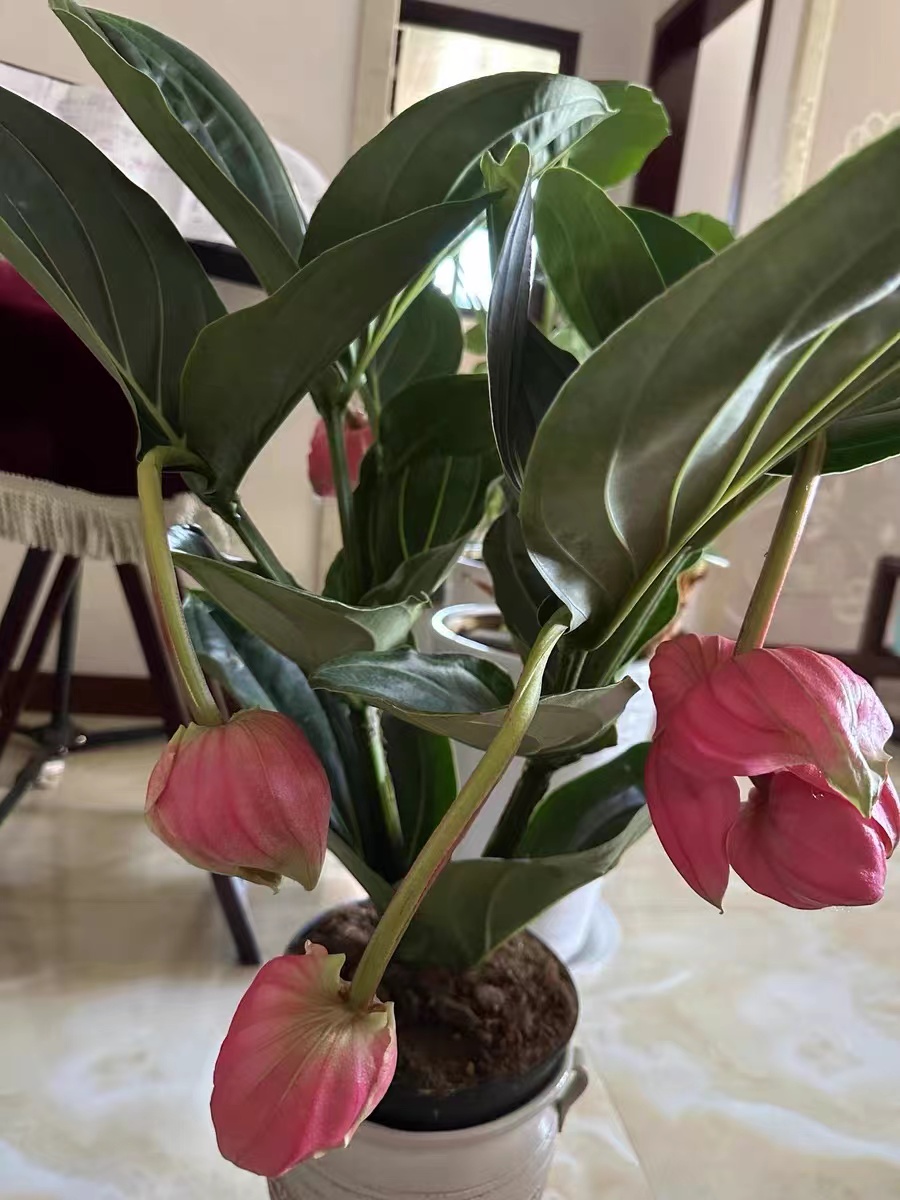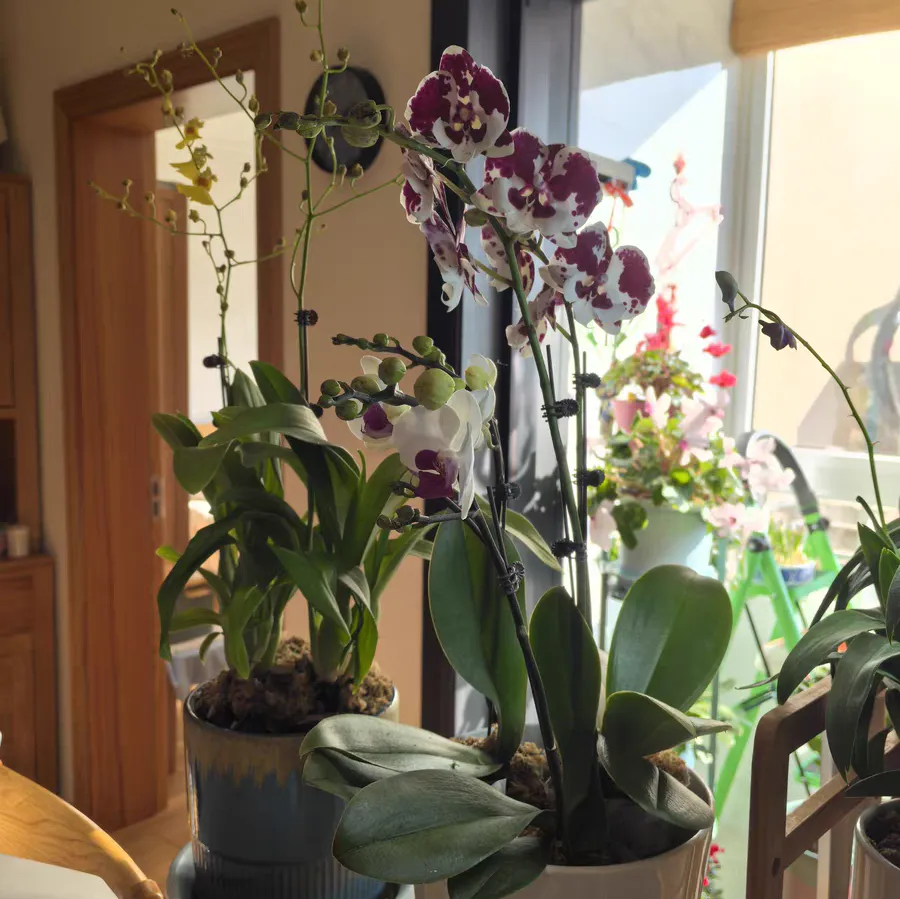Medinilla magnifica is a tropical flower. Its growth has relatively strict requirements on multiple factors such as temperature, light, soil, water and fertilizer. Therefore, during the maintenance process, a little carelessness may lead to the dropping of flower buds.
The following are several main reasons for the dropping of flower buds of Medinilla magnifica:
Unsuitable temperature
Medinilla magnifica likes a high-temperature environment. The suitable growth temperature is 18-26°C. If the temperature is too low or too high, it will affect its normal growth and lead to the dropping of flower buds. In winter, special attention should be paid to keeping the indoor temperature above 10°C to avoid the plant being damaged by frost. At the same time, in summer, when the temperature is high, ventilation and cooling work should be done well to prevent the plant from being damaged by high temperature.
Insufficient or excessive light
Medinilla magnifica likes a bright scattered light environment and is not resistant to direct strong light. If the plant is kept in a dark place for a long time, its photosynthesis will be weakened, thus affecting the growth and opening of flower buds. On the contrary, if the light is too strong, especially under the scorching sun in summer, it will burn the leaves and flower buds of the plant and lead to the dropping of flower buds. Therefore, in daily maintenance, the light intensity should be adjusted reasonably according to the season and weather conditions. In spring and autumn, it can be exposed to the sun appropriately, and in summer, shading treatment is needed.
Improper watering
Medinilla magnifica likes humidity but is afraid of waterlogging and has high requirements for water. If too much water is poured and the potting soil is waterlogged, the roots of the plant will be in a wet state for a long time and rot, which will in turn affect the growth and opening of flower buds. On the contrary, if too little water is poured and the potting soil is too dry, and the plant cannot get sufficient water supply, the flower buds will also drop due to poor development. Therefore, when watering, follow the principle of "water when dry and wet" and keep the potting soil slightly wet.
Insufficient or excessive fertility
Medinilla magnifica needs sufficient nutrient support during the growth process. If no fertilization is applied for a long time or the amount of fertilization is insufficient, the plant will lack nutrients and affect the growth and opening of flower buds. On the contrary, if too much fertilization is applied or the concentration is too high, it will cause fertilizer damage and damage the roots and leaves, and also lead to the dropping of flower buds. Therefore, when fertilizing, fertilize reasonably according to the growth situation of the plant and seasonal changes, and apply thin fertilizers frequently.
Soil compaction
Medinilla magnifica likes a soil environment that is loose, breathable and has good drainage. If the pot is not changed or the soil is not changed for a long time or the soil is seriously compacted, the root system of the plant will not breathe smoothly and grow poorly, which will in turn affect the growth and opening of flower buds. Therefore, during the maintenance process, the pot and soil should be changed regularly to keep the soil loose and breathable.
To make Medinilla magnifica bloom smoothly and maintain a good growth state, the following aspects of maintenance methods need to be noted:
Choosing flowerpots and soil suitable for the growth of Medinilla magnifica is the key to successful maintenance. The flowerpot should be of a type with good air permeability and many drainage holes; the soil should be loose, breathable, well-drained and slightly acidic soil rich in organic matter. Peat soil, leaf mold soil and perlite can be mixed and used in a ratio of 1:1:1.
Reasonably regulate light and temperature according to the growth habits of Medinilla magnifica. In spring and autumn, it can be exposed to the sun appropriately to promote photosynthesis; in summer, shading treatment is needed to prevent direct strong light; in winter, attention should be paid to keeping warm and preventing cold to avoid low-temperature frost damage. At the same time, keep the indoor air circulating to provide a good growth environment.
When watering, follow the principle of "water when dry and wet" to keep the potting soil slightly wet; when fertilizing, fertilize reasonably according to the growth situation of the plant and seasonal changes and apply thin fertilizers frequently. During the vigorous growth period, a balanced fertilizer of nitrogen, phosphorus and potassium can be applied every half month; after the flowering period, potassium dihydrogen phosphate can be supplemented to promote re-flowering.
Regular pruning and shaping can keep the plant shape of Medinilla magnifica beautiful and promote the germination of new branches. During the growth period, dense branches, weak branches and diseased branches can be cut off to reduce nutrient consumption; after the flowering period, the remaining flowers should be trimmed in time to avoid waste of nutrients.
Regularly check the growth of Medinilla magnifica and find and prevent pests and diseases in time. Biological control and chemical control methods can be combined to control the occurrence and spread of pests and diseases.
In short, to make Medinilla magnifica bloom smoothly and maintain a good growth state, multiple aspects of maintenance methods need to be noted. Only by mastering the correct maintenance skills can Medinilla magnifica bloom beautiful flowers at home.
What's the matter with the dropping of flower buds of Medinilla magnifica?

Share with
Tagged in :




Leave a Reply